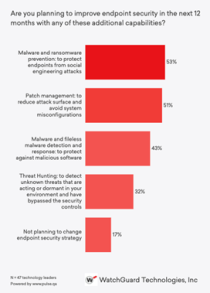Threat hunting: a top priority for businesses of all sizes
Today's threat actors are well-organized, highly skilled, motivated, and focused on their targets. These adversaries could be lurking on your network or threatening to break into it, using increasingly sophisticated methods to reach their goal. Simply put, there's often no need for adversaries to deploy malware at the early stages of the attack. They usually have all the tools they need to get into the network and move laterally to instrumentalize the legitimate applications present in the endpoints and execute a living-off-the-land (LotL) attack.
This trend presents severe challenges for organizations' security programs. It underscores the importance of using a combination of technology-based control with human-led proactive hunting to ensure that the organization moves quicker than the speed of the threat, remaining well protected and resilient.
The function of threat hunting
Threat hunting is a niche function often misunderstood. Therefore, it's essential first to examine what we mean when we use the term threat hunting.
It can be defined as an analyst-centric process that enables organizations to uncover hidden, advanced threats missed by automated preventative and detective controls. In simple terms, the threat hunting mission is to find those unknown threats that manage to bypass technology-based controls.
Threat hunting is a discipline that organizations need to stop thinking of not as a nice-to-have but as a must-have. It should be a continuous function, not a point in time, as it is essential in any robust cybersecurity program.
Threat hunting is a top security initiative

In fact, although threat hunting is still an emerging discipline, there is significant interest in it. According to Pulse, 32% of IT leaders say that their organizations plan to reinforce their endpoint security posture by adding a threat hunting program to their overall security strategy.
WatchGuard EDR and EPDR, combined with the Threat Hunting Service and Patch Management, provide you a single solution to cover all additional capabilities planned in the next 12 months. With just one single lightweight agent to deploy and everything managed from a single Cloud-based console, they are a natural extension to any organization’s security program.
Final takeaways:
Organizations that are currently considering starting up an internal threat hunting capability should be aware of the following:
- Threats are moving faster than ever before. Remember the speed at which threats are operating and evolving.
- No organization is immune, regardless of size, vertical, or location. Every organization is a target, regardless of where your organization is located and the vertical you operate in.
- Threat hunting is now a must-have for every organization. Given the speed at which threats are moving, hunting is no longer a nice-to-have; it needs to be viewed as a must-have capability for every organization.
- Speed, scale, and consistency are critical. Threat hunting needs to be able to be conducted with speed and scale. And that requires structured, repeatable processes, mature technologies, long-term visibility, and threat hunters backed by deep expertise, knowledge, and threat intelligence.
- Structure your hunts using the MITRE ATT&CK framework. WatchGuard Advanced Endpoint solutions come fortified with many ATT&CK techniques identified.
- If you cannot do this in-house, partner with a provider that can.
Learn the ins and out of threat hunting activity from our top threat hunters by reading our latest eBook Threat Hunting: Taking a proactive position with your cybersecurity and start your Threat Hunting path with WatchGuard Advanced Endpoint security.